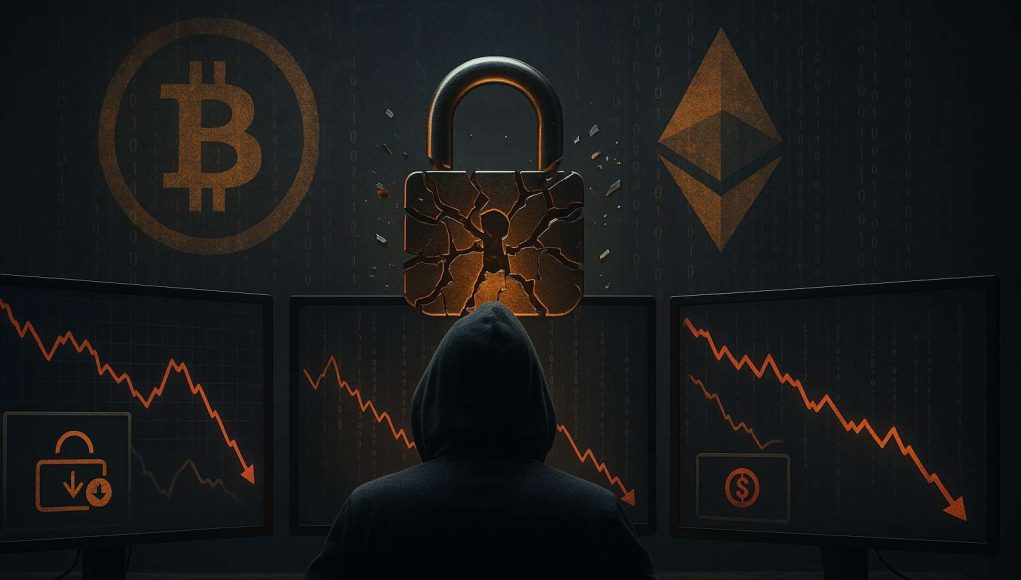August 2025 was another brutal month for digital asset security. According to PeckShield, crypto hacks in August 2025 resulted in approximately $163 million in losses across 16 incidents, jumping 15% compared to July. The month was defined by a record-setting $91M Bitcoin heist carried out through social engineering. It was followed by a BtcTurk hack that reignited concerns over the vulnerabilities of centralized exchanges.
August Crypto Hacks 2025: Breakdown of Major Incidents
The single biggest theft in August involved 783 BTC, worth $91 million, stolen via a support impersonation scam. The attackers tricked victims into handing over wallet access and quickly laundered the funds through Wasabi. The scale of this Bitcoin heist makes it one of the largest individual thefts of the year so far.
The month also saw a major crypto exchange hack at BtcTurk, which lost between $48 million and $50 million in a multi-chain hot-wallet breach. The exchange briefly suspended withdrawals and deposits following the incident. The case reminded investors that even large exchanges remain exposed.
- Odin.fun: ~$7M liquidity pool exploit.
- BetterBank.io: ~$5M reward mint manipulation.
- CrediX Finance: ~$4.5M drained before the team vanished, raising suspicions of an exit scam.
Together, these cases paint a picture of crypto hack statistics where no corner of the industry, DeFi protocols, centralized exchanges, or retail users, is safe.
>>> Read more: BtcTurk Cyberattack June 2024 Reveals Critical Weaknesses
Phishing Scams and the Human Factor
While smart contract audits and DeFi security have improved, attackers are shifting their efforts toward crypto phishing scams. The $91M Bitcoin hack was not the result of a technical vulnerability. It was a carefully orchestrated social engineering play.
This reflects a broader industry weakness: the human layer is now the weakest link. Code is stronger than ever. People are not. Fake support agents, phishing websites, and malicious signature requests are now more effective than contract exploits. The data suggests that user education and operational security are just as critical as code reviews.
Exchange Risks Back in the Spotlight
The BtcTurk hack in August 2025 underscores the lingering risks of crypto exchanges being hacked. Centralized exchanges hold large amounts of user funds in hot wallets. This creates single points of failure.
Unlike DeFi exploits, which are often visible and dissected by the community in real time, exchange breaches tend to be opaque. Public details are scarce, and responses are often delayed. For traders and investors, the renewed wave of CEX hacks is a reminder that custody choices matter as much as market conditions.
The Bigger Picture: Crypto Hack Statistics 2025
The losses in August bring the 2025 year-to-date tally to around $2.47 billion, already surpassing 2024 totals. Reports from CertiK and Infosecurity confirm that phishing, insider threats, and North Korea crypto hacks are fueling the 2025 surge.
Another alarming trend is the speed of laundering. Security firms note that stolen funds can be moved and hidden in under three minutes. That speed makes it nearly impossible for exchanges or investigators to react in time.
Overall, this year’s crypto hack statistics reveal a clear trend: fewer smart contract bugs, more behavioral exploitation, and centralized vulnerabilities.
>>> Read more: How Blockchain Fights Deepfake Scams in Crypto and Media
Looking ahead, the risks are unlikely to subside. Security analysts warn that crypto phishing scams could escalate further in the remainder of 2025 as attackers refine their tactics. Analysts also expect fresh attacks on bridges and exchanges.
Hackers will retain the upper hand unless the industry strengthens user education, automates incident response, and improves AML controls.
The message from August is clear: crypto hacks in 2025 were driven less by broken code and more by broken trust. With nearly $2.5B already lost this year, the industry faces a race to adapt faster than its adversaries.
Readers’ frequently asked questions
How long does it typically take for stolen crypto to be laundered after a hack?
Security firms report that in 2025, laundering can be completed in under three minutes, making it nearly impossible for investigators or exchanges to react in time.
Were user funds on BtcTurk permanently lost in the August 2025 hack?
BtcTurk confirmed that affected assets were stolen from hot wallets, but the exchange has not announced permanent losses for users. Platforms often cover losses through reserves or insurance, though official reimbursement details are pending.
What steps can retail investors take to reduce exposure to phishing scams?
Investors should never share wallet credentials with “support staff,” verify URLs before connecting wallets, use hardware wallets for large balances, and enable multi-factor authentication wherever possible.
What Is In It For You? Action items you might want to consider
Strengthen your personal defenses against phishing
Phishing and social engineering scams now drive the majority of crypto losses. Always verify support contacts, double-check website URLs, and use hardware wallets for long-term storage.
Diversify custody beyond centralized exchanges
The BtcTurk breach shows that exchanges remain targets. Spread funds across self-custody options and multiple platforms to reduce single points of failure.
Monitor security reports and alerts
Follow updates from firms like PeckShield and CertiK to stay aware of current attack trends. Timely information can help you recognize red flags before they impact your portfolio.











[…] >>> Read more: August 2025 Crypto Hacks: $163M Lost […]